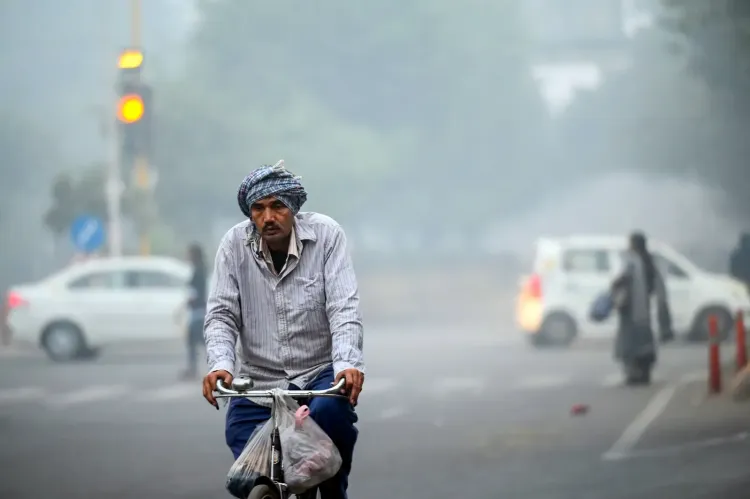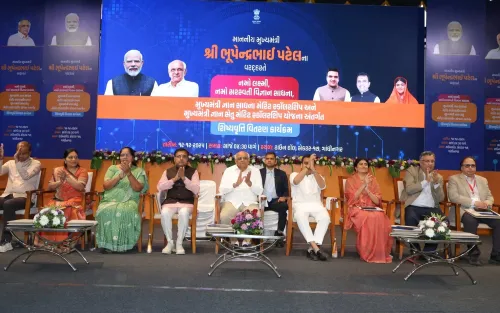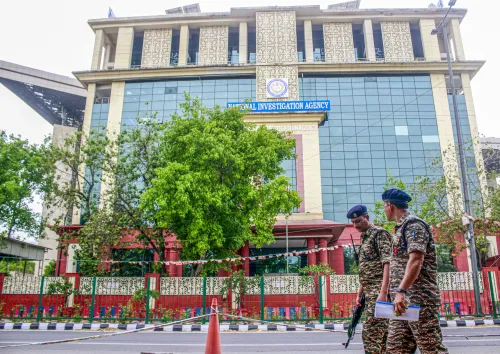Is AQI Improving? Sirsa Claims Steps Yielding Results, Promises Artificial Rain in Delhi Soon

Synopsis
Key Takeaways
- Delhi's AQI dropped significantly in a single day.
- Plans for artificial rain are underway to address air pollution.
- Approximately 2,000 enforcement teams are active throughout the city.
- Enhanced monitoring of construction sites and vehicular emissions is being conducted.
- Future initiatives include acquiring more pollution control equipment.
New Delhi, Oct 23 (NationPress) Suggesting the implementation of artificial rain as a strategy to combat air pollution in Delhi, Environment Minister Manjinder Singh Sirsa announced on Thursday that the rigorous winter enforcement initiative has begun to show tangible results, with the AQI decreasing by 50 points in just one day.
“The AQI in Delhi has shown considerable improvement — the current level of 305 is nearly 50 points lower than yesterday’s 353. This positive change reflects the city’s response to prompt and organized actions on the ground,” stated Sirsa after a review meeting.
He instructed various departments to maintain this momentum by concentrating on identified pollution hotspots and facilitating inter-agency collaboration through the Green War Room.
“Approximately 2,000 teams are deployed continuously, day and night. The strategy for Delhi is not confined to winter; it represents a 24/7, year-round governance framework focused on data, responsibility, and public involvement,” Sirsa added.
He mentioned that while current measures are producing outcomes, plans for the future are also underway.
“Our initiatives are not only for the present — we are also preparing for the future. We will soon begin the acquisition of 70 additional mechanized sweepers, 70 more anti-smog guns, water sprinklers, and 140 litter pickers to cover 1,440 km of roads. We are promoting innovation through Delhi’s Clean Air Challenge, and cloud seeding will be conducted soon in collaboration with IIT Kanpur and IMD,” Sirsa stated.
Describing the Delhi government’s Comprehensive Enforcement Deployment, Sirsa noted that for dust and construction management, 200 day teams and 178-night teams (totaling over 970 personnel) are actively monitoring compliance with dust and construction regulations.
Sites exceeding 500 sqm are under rigorous surveillance. MCD, PWD, DDA, DSIIDC, and CPWD are leading this initiative with GPS-tracked sweepers and daily reports to the Green War Room, according to the statement.
Highlighting the success in controlling open burning, the Minister reported that 230 day and 213 night patrols (totaling 443 teams) comprising more than 1,200 personnel are actively addressing garbage, leaf, and biomass burning issues. These teams are deployed by MCD, DDA, DSIIDC, and the Revenue Department.
To tackle vehicular emissions, 578 teams from the Transport and related departments, alongside 505 mobile prosecution teams from the Delhi Traffic Police with 974 officers, are actively monitoring PUC, idling, and visible smoke violations.
Furthermore, checks on industrial pollution have been intensified, with 65 dedicated teams (33 from DPCC and 32 from DSIIDC) conducting daily inspections to ensure compliance with PNG fuel usage and emissions standards.










